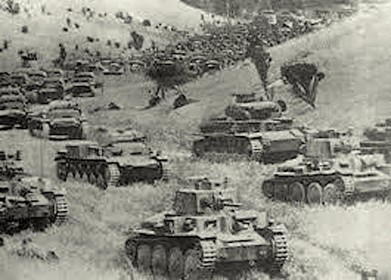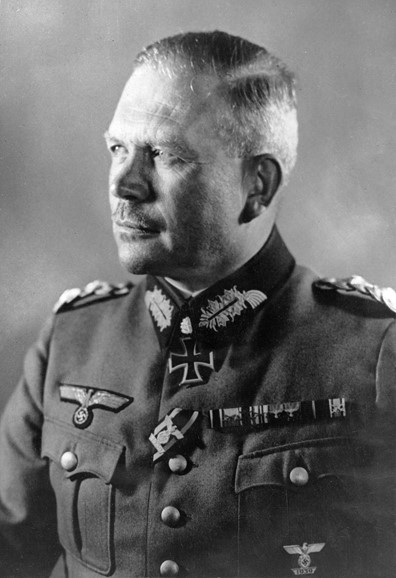Hi gang, Eric M Walters wrote a review regarding this volume. He has given me permission to share with the BigBoard Readers!
HITLER’S PANZERS EAST: World War II Reinterpreted. By R.H.S. Stolfi.
University of Oklahoma Press, 1991, 272 pp., $24.00. (Member $21.60)

Hitler’s Panzers East is a significant book and highly recommended for those deeply interested in the German campaigns against the Soviet Union in World War II. Dr. Russel Stolfi expands on Heinz Guderian’s and Franz Halder’s argument that Hitler should not have diverted armor forces to the flanks of Army Group Center (AGC) when Moscow was within reach in August 1941, but should have instead pressed on to the Soviet capital. The great lengths to which he goes in support of this position is the strength of the book; unfortunately, he goes on to argue comparatively less persuasively that a German thrust to Moscow and beyond in late summer 1941 would have won the war in Russia, and World War II in general. If Stolfi answers all of the reader’s questions about the German capability to take Moscow in August 1941, he creates too many more in hypothesizing about the resulting course of World War II.
The central theme of the book is the propensity of a siege-minded Hider to constantly restrain his successful Wehrmacht. The Fuhrer’s controversial decision in August 1941, to turn Guderian’s panzer group south (resulting in the formation of the Kiev Pocket, which eventually yielded over 600,000 Soviet prisoners) was a manifestation of this siege mentality. This explanation of Hitler’s rationale is quite novel and very credible, especially given Germany’s World War I experiences. Stolfi argues that Hitler’s decisions made in August 1941 proved to be the genuine turning point of the World War II, not the batdes of El Alamein and Stalingrad, which occurred much later. This argument is not new; Halder and Guderian saw the paramount significance of Hitler’s decision to redirect his panzer columns north and south at that rime. Authors since then-most notably Victor Madej, Shelby Stanton, and Bryan Fugate-have echoed this same view in the past two decades. Even the assertion that AGC had the capability to seize Moscow in late summer 1941 is again not a new idea to anyone familiar with the literature of the Eastern Front. What Dr. Stolfi has done better than anyone else is present a strongly convincing case that the Germans indeed possessed the capability to reach this objective in August. Particularly good are the chapters examining in detail the combat strength and logistical wherewithal of AGC in that fateful month to mount a drive to Moscow and beyond.

Inevitably, however, the omissions in this work detract from an otherwise fine historical evaluation. Relatively few Soviet and pro-Soviet sources (notably Bryan Fugate’s Operation Barbarossa)-no matter how flawed they themselves might be-appear in the bibliography. Dr. Stolfi admits that this creates a “potential for bias” in the preface, but claims that the dearth of Soviet materials forced him to “make a virtue out of necessity” and work primarily from German sources. He then makes the bald statement at the end of his preface that:
. . . the Germans controlled events during the summer of 1941 to the degree that most significant points needed for verification can be derived from German sources. The Germans were so strong relative to the Soviets and so successful in overrunning battlefields, taking prisoners, seizing documents, conducting aerial reconnaissance, and intercepting Soviet radio-and even telephone message traffic-that German records provide a picture of the possibilities for Soviet survival.
Such a blatant pro-German viewpoint raises the suspicions of the critical reader-this apparent tossing away of the few Soviet and pro-Soviet sources in print certainly contributes nothing to the strength of Dr. Stolfi’s arguments (and does detract from them a great deal).
For example, Marshals G. I. Zhukov and A. I. Eremenko have offered the opinion that if AGC had driven on to Moscow in late summer, instead of diverting its armor to the Ukraine and Leningrad fronts, Soviet reserves historically released to these areas would have then been used to strike at the flank and rear of the Nazi drive. S. K. Timoshenko attempted to do exactly that with the forces of the West Front during the earlier Smolensk operation in July, which seriously worried the German Second Army and Fourth Army commanders. During these trying times even Guderian requested a corps of infantry to be attached to his panzer group to guard his flanks and rear. With a much longer flank necessitated by a drive to Moscow and beyond, the problem could have conceivably reached crisis proportions, possibly even forcing the Germans to quit what Stolfi terms “the Moscow-Gorki space” in the winter (if they indeed had gotten that far) to shorten their lines and create reserves to counter such attacks. Still, perhaps Dr. Stolfi is right-his research may have revealed that such Soviet strikes would not have made much of a difference; the problem is that the knowledgeable reader doesn’t benefit from a direct and detailed assault on Zhukov’s, Eremenko’s, and Fugate’s positions. And it is only more disheartening to find that these authors are not even listed in the bibliography-one can only wonder if they were even consulted.
Dr. Stolfi’s explanations about how the war in the Soviet Union would have concluded after a successful German conquest of the Moscow-Gorki space seem too general, especially when compared to Fugate’s bold argument that, because of the Fuhrer’s genocidal impulses towards the Slavs, the blitzkrieg had the wind taken out of its sails. To support his assertions, Dr. Stolfi could have provided a more detailed argument on why the Nazi’s occupation policies would not have materially affected their chances for victory. Also, Dr. Stolfi’s alternative history on post-Moscow/Gorki operations should have been further extrapolated to include a hypothetical mopping up of the Red Army in 1942. The incomplete attention he devotes to both these issues leaves the curious reader still hungry; one may wish that he had either left these assertions out or developed his arguments to a much greater degree. His straight-faced statement that a German win in Russia would have meant the end of World War II doesn’t get much more explanation either.

Despite its drawbacks, Hitler’s Panzers East is truly a significant contribution to Eastern front literature, if only for its new interpretations of Hitler and the dissection of AGC’s capability to take Moscow in August 1941. Unfortunately, this book-while not containing errors of fact-feels incomplete because of the few underdeveloped arguments and omissions mentioned earlier. Thus, it is not a definitive work. If Dr. Stolfi sought to create controversy, he has certainly succeeded; Hitler’s Panzers East will add more fuel to the debate over whether Germany could have won Operation BARBAROSSA. This book is worthwhile reading for serious students of this massive and dramatic campaign, as well as for wargamers who wish to challenge the design assumptions in their Russian Front games. Hitler’s Panzers East should be studied in tandem with Fugate’s equally controversial Operations Barbarossa-interested readers can then be simultaneously treated to opposing arguments and form their own conclusions.

reviewed by Capt Eric M. Walters
Author Affiliation
Capt Walters is currently serving as an intelligence analyst in the Counter Drug Division, Defense Intelligence Agency.
A very interesting read. Some of his points are valid in my opinion.